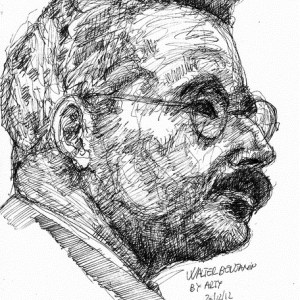As students who specialize in book publishing, we encounter the question, what is publicity? In Book Marketing, Professor Juergens states that “publicity is a company’s or a person’s or a book’s or an author’s presence in the media that is driven by relationships, such as author relations, media relations, event management, and brand management.” Considering publicity in terms of relationships is a novel and interesting idea, making me wonder, how do authors, publishers, readers, and content relate to each other? To explore this question, let’s look at the history of literature.
The history of literature may be divided into two eras: the prehistoric era before the invention of writing and the printing era after the introduction of printing by Gutenberg. In the prehistoric era, storytellers handed down folklore and legends orally, which means that the audience “experienced” the story just for that occasion. These stories were therefore divine, ritualistic, and exclusive. Walter Benjamin named such authenticity “aura,” which is “the unique phenomenon of a distance, however close it may be. If, while resting on a summer afternoon, you follow with your eyes a mountain range on the horizon or a branch which casts its shadow over you, you experience the aura of those mountains, of that branch” (1936).
In this era, the actors were the stories, storytellers, and audiences. Notice that there is no author or publisher, of course. Storytellers always recited original and authentic stories. Audiences were intoxicated with the liveliness and togetherness. It is unclear whether stories, storytellers, or audiences were the main actor; perhaps, it was the story itself.
Since the invention of printing, artwork—including literature—has been able to be reproduced. Therefore, artwork became widely distributed and made easily available. Stories appeared in public in the form of “publicity,” rather than the onetime occurrence of oral tradition.
Stories began to belong to someone, mostly the author. Therefore, the relationships became more complex and segmented: First the author creates the story, then it is passed to a publisher. Within the publishing house, each department—such as editing, design, or marketing—refines the story into a book that is presentable for exhibition. Next, the finalized book is sent to warehouses, bookstores, and libraries. Finally, the book makes its way into the hands of readers.
Benjamin describes the printing era as the “decay of the aura”; that is, artwork lost its authenticity and was made to be seen by as many people as possible. Benjamin claims, “With the emancipation of the various art practices from ritual go increasing opportunities for the exhibition of their products.”
I agree with the idea that since the mass production era, new actors began to participate in literature, and their purpose is to make literature works suitable for exhibition. However, does this mean that aura has disappeared? No, aura still exists. It merely changed its host.
In the prehistoric era, aura existed in the story itself. After the printing era, authorship began to matter, so authors became the hosts of aura. Thus, we can experience aura where an author appears.
A signing session for an author is a good example. Despite the internet era, many literature fans are still eager to see the author in person. They are not satisfied with just reading their books or following them on social media. Readers want to see and chat with their favorite author, even if it’s just for a couple of minutes.
Mario Cacciottolo acknowledges the high demand for signing events, saying, “Book market people are passionate about particular authors. No one is going to turn down the opportunity to meet an author who wrote a book they adore. And that’s the one thing websites selling books at cheaper prices can’t ever offer” (2010). In addition, authors also look forward to meeting their fans. Scottish crime author Stuart MacBride states, “It’s not about selling books, it’s about meeting readers. It’s our one opportunity to get out and meet people. And if you have dedicated a book to someone, then you know that person wants that book and loves that book.”
Thus, even though literary works are mass produced, aura still exists in author-reader relationships. We can experience aura where we get together. Marketers should take advantage of the power of aura not only for promotion but also for providing soul-shaking experiences. This will eventually compel publishers to build and maintain good relationships with all concerned.

